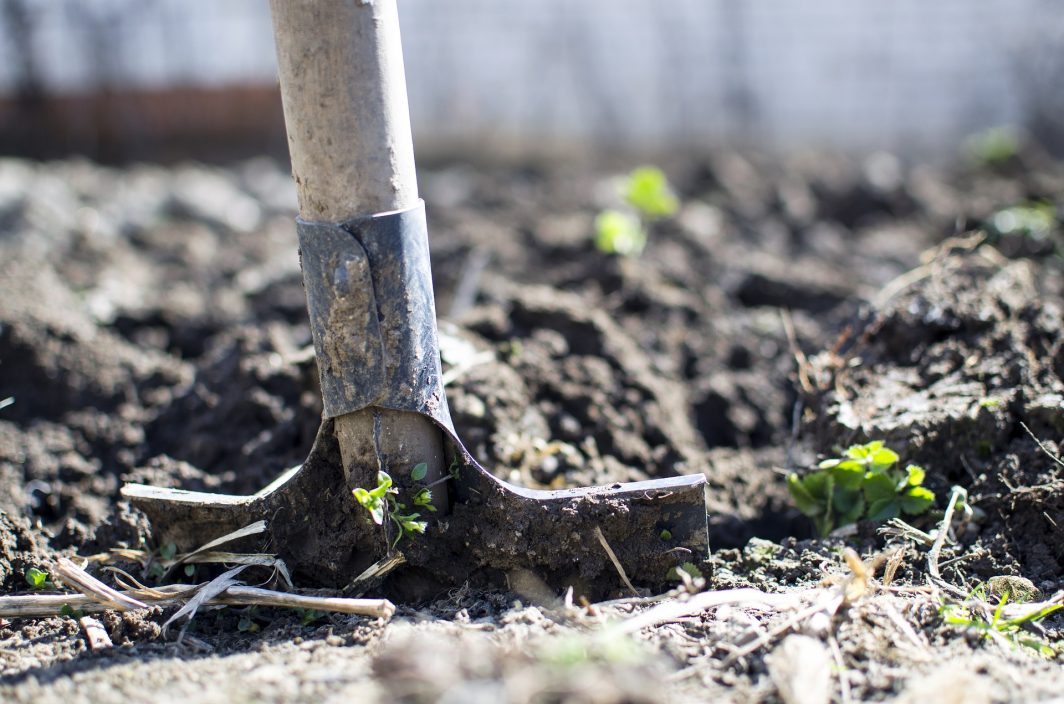From the Composting Hub, Transition Darebin
A resilient future is one where we close loops and one of our big open loops is waste. Sure, we get a lot of nutrients out of our food but we also throw a whole lot of nutrients away in the trash. About 50% of household waste is made up of food waste which takes energy to cart away and then rots away in landfill and releases methane (a powerful greenhouse gas); all up not a great system.
Most of us have had some involvement with composting over the years but for many of us (myself very much included) these have often resulted in slimy fly infested piles of waste that produce a smell that even rotten eggs find challenging or alternatively piles of dry matter that just sits there. Yes, composting can sometimes seem like witchcraft, or even alchemy, so here’s our Transition Australia hints file. So let’s step back and have a quick look at what we’re talking about and how we can close the food waste loop.
What is composting?
People can get very passionate about compost (and good on them for doing so) but it can get a little precious about what is and isn’t composting so lets just start by agreeing that organic material breaks down or decomposes. We can have things break-down anaerobically (without air) which is great if you’re trying to generate bio-gas or make an amazing fertilizing tea, but since most of us just want to return our waste nutrients to the ground without it smelling like a swamp then what we are really talking about is aerobic decomposition. In broad terms there are two types of composting; cold composting where the contents break down at a normal (and fairly slow rate) and hot composting where we use the heat produced by the breaking down of organic matter to make a nice comfy space for bacteria which turbo charges the decomposition process.
Hot Composting
For most people this is the goal but if you don’t have the space, the inclination or the mass of material then the below guidelines are good advice for a cold heap anyway.
What makes a hot compost?
In real basic terms you need a balance of two types of materials. Greens (which have lots of nitrogen) like grass clippings, coffee grounds, food waste, manure etc and browns (which have more carbon) like dried leaves, woodchips, shredded newspaper. If you mix these up and make sure there’s some water and air in there then you’ve got a compost pile. The bacteria in the compost will throw a little party and make our waste into lovely compost and at the same time generate heat, which helps speed it all up.
But the magic word here is ‘BALANCE’. Too many greens and the whole thing gets stinky, slimy and full of vinegar flies, too many browns and you get…well nothing except for a dry pile of sticks and paper. There are lots of very scientific tables about carbon/nitrogen ratios and if you want to work it out you’re looking for a ration of about 25-30:1 (C:N) but the easiest way to start is just to think about listening to your pile and restoring the balance. so if it’s stinky and slimy add browns and if it’s looking dry and lifeless then add greens (and maybe a little water). As we said right at the top what we’re looking for is aerobic decomposition so adding air and turning your heap weekly will help things move)
Hot Composting and Size
In reality hot composting needs to have a sufficient size where the decomposition sets off a chain reaction by providing heat. This means that your pile will actually get quite hot particularly in the centre. To make this happen you need about a cubic metre of material and you need to rotate it so the outside material (where it’s colder) gets moved to the inside and vice versa.
What to Avoid
Once you get good at hot composting then really anything goes as the heat will destroy even tough weed seeds and pests. It will also do it at sufficient pace that vermin will find it too hot to get involved. That said many people don’t have this situation and particularly in an urban area, having a rat-nest/compost pile is unlikely to win you many friends. So when you are starting out avoid meat, avoid processed products like bread and avoid dairy. As a general rule also limit the amount of alliums (onion, leek, garlic etc) and also citrus peel as these both have anti-bacterial properties and it’s the bacteria that does the breaking down so we don’t want to get rid of them (incidentally onion peelings make the basis of an amazing stock and citrus peel can be used to make a kick-ass cleaner). Also it’s worth leaving out kikuyu and other vigorous spreading grasses. If you have a super-hot pile you’ll be fine but in my experience it’s just easier to leave them out. Also you might want to avoid heavily infested or infected plants, again if you have an amazing pile it wont matter but there’s enough things to think about in this world without worrying about whether your well-intentioned efforts are actually spreading disease!
What about water?
Water is crucial but let’s actually redefine this term to moisture, a word carefully chosen to draw our attention to the fact that we weren’t necessarily talking about the adding of water only but more the moisture content of the ingredients in the mix. Moisture is pretty important in compost. Too much and you have a soggy stinky mess, too little and you have dry twigs. It also helps the bacteria grow and the pile build up the heat that will speed up the breakdown of the contents. We agreed that the middle road was better, not too wet and not too dry. The perfect mix is ‘sponge-like’, not sopping wet but able to release a bit of water when squeezed.
How to Make Your Pile
Sadly (yes I know…I feel your disappointment) there is no magic formula that guarantees success as such but if you keep thinking about balance, air and moisture you are onto a good thing and if you add the last magic ingredient then you’re well on your way, but here are some hints.
Start with compost: Since composting relies on a vibrant bacterial culture it’s worth starting off with a good supply of this culture. So start your pile with some compost that you already have. When distributing my compost I make sure that a portion of my best stuff goes in to ‘seed’ the next pile.
Water: The best time to make sure that your compost has the right moisture is when you build it as if you water it when it’s done then you don’t get a good distribution. You can do this by briefly soaking material as you pile it in a wheelbarrow, add buckets or if you’ve got a host just keep adding moisture. It takes a surprising amount of moisture to get it to the right point initially.
Layers and Diversity: As well as balance between greens and browns you also want to alternate between then. You also want diversity in what you’re putting in so leaves, kitchen scraps, cut grass, paper, roadkill…. really the list is endless but you want balance and layers.
Size: The speed at which things will break down will depend on the size of the material. If you have big chunks of material then break it up first. Even twigs and leaves will work better if chopped up and paper certainly will. If you are lucky enough to have a lawnmower (or a friend with one) then running over your twigs and leaves will do a good job.
Look around: One of the common problems that people have is that they really don’t have enough stuff to make a good pile (remember about a cubic metre). There are lots of community wasted products though that can help
- Coffee grounds: talk to your local cafe. Coffee grounds make a great addition and sometimes you can even score a free coffee by taking a bag or two
- Coffee husks: yes it’s clear we drink a lot of coffee. Coffee husks are the dried shells of the coffee beans and are a waste product from coffee roasters. If you are using these make sure you wet them well (before you start as they can blow around and irritate sensitive throats) and don’t put too thick a layer as they can form into a cardboard type layer. Also whilst you’re picking up husks ask about hessian sacks which are also both very useful to cover and keep your pile warm and will degrade along with the pile.
- Cafe/Kitchen waste: Commercial kitchens in particular make huge amounts of waste and often they will be only too happy to put buckets (with lids) aside for you. Think (and discuss) the logistics of this carefully before you start though as you don’t want to be hulking tons of buckets and they don’t want their scraps rotting in the kitchen also avoid meat products if you can.
- Community waste. Most households won’t (or at least shouldn’t) produce enough waste to make a regular hot compost. One great way to get around this is to do it collaboratively by offering to take kitchen and garden scraps that people can deliver to you.
- Grass mowing: Your local garden maintenance person has to dump all that cut grass at the tip and it costs them to do so. They will often fall over themselves with the offer to dump a load for your compost pile construction session. Make this an as-needed deal though otherwise you can end up with an unbalanced pile.
- Municipal/arborist waste: The council and private operators will regularly mulch trees in to lovely small bits. Again this is waste for them but good carbon rich product for you so ask or make a call to your local parks person. They tend to do trailer loads though so be prepared or do it collaboratively with a bunch of neighbours.
The last ingredient… love!
There’s a saying that the footsteps of the farmer are the best fertilizer. The same goes for compost. The more frequently you interact with it the better it will work. For me I leave a garden fork in the pile and only use a small bucket for kitchen scraps so I visit it two or three times a week to give it a quick turn or just aerate it a little. If you’ve got a bad back then look into t a compost turner which looks like a big cork-screw. Doing this will give you all the information you need on what’s working and what’s not and is surprisingly satisfying.
Share this Post

